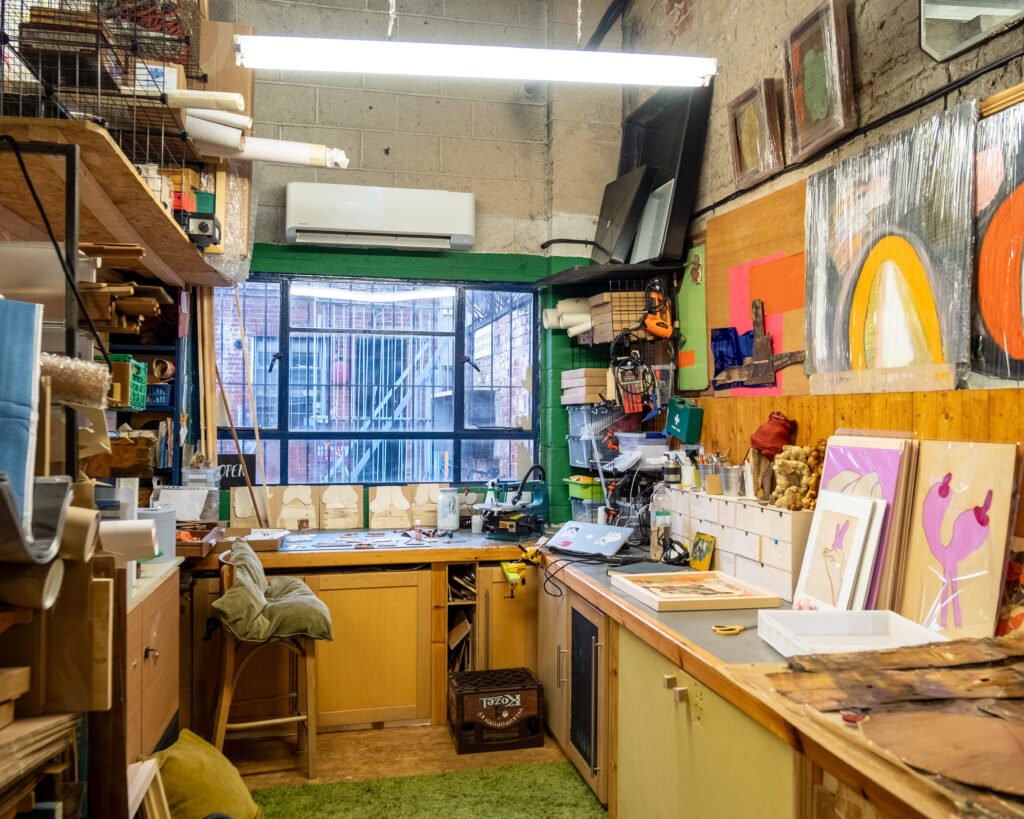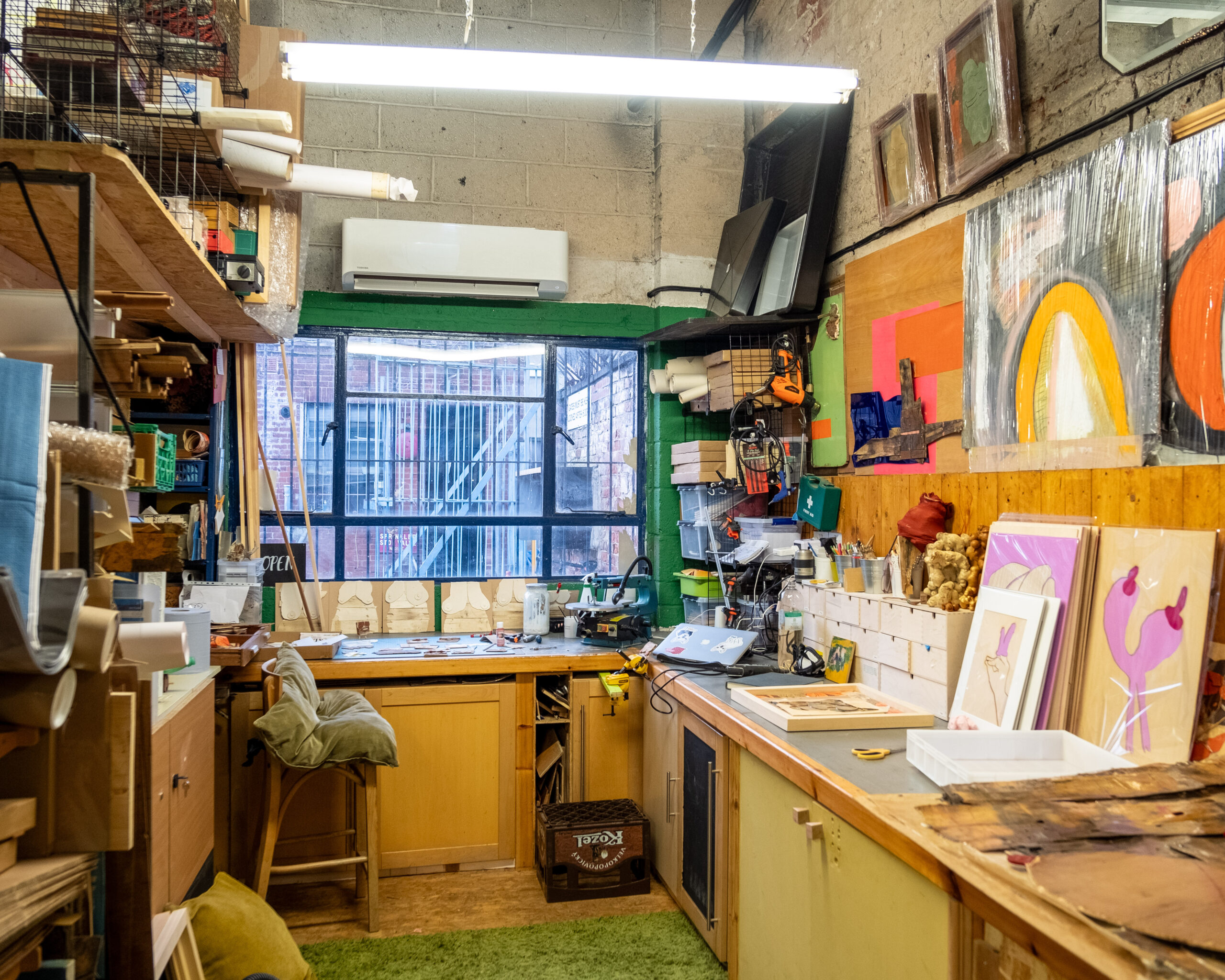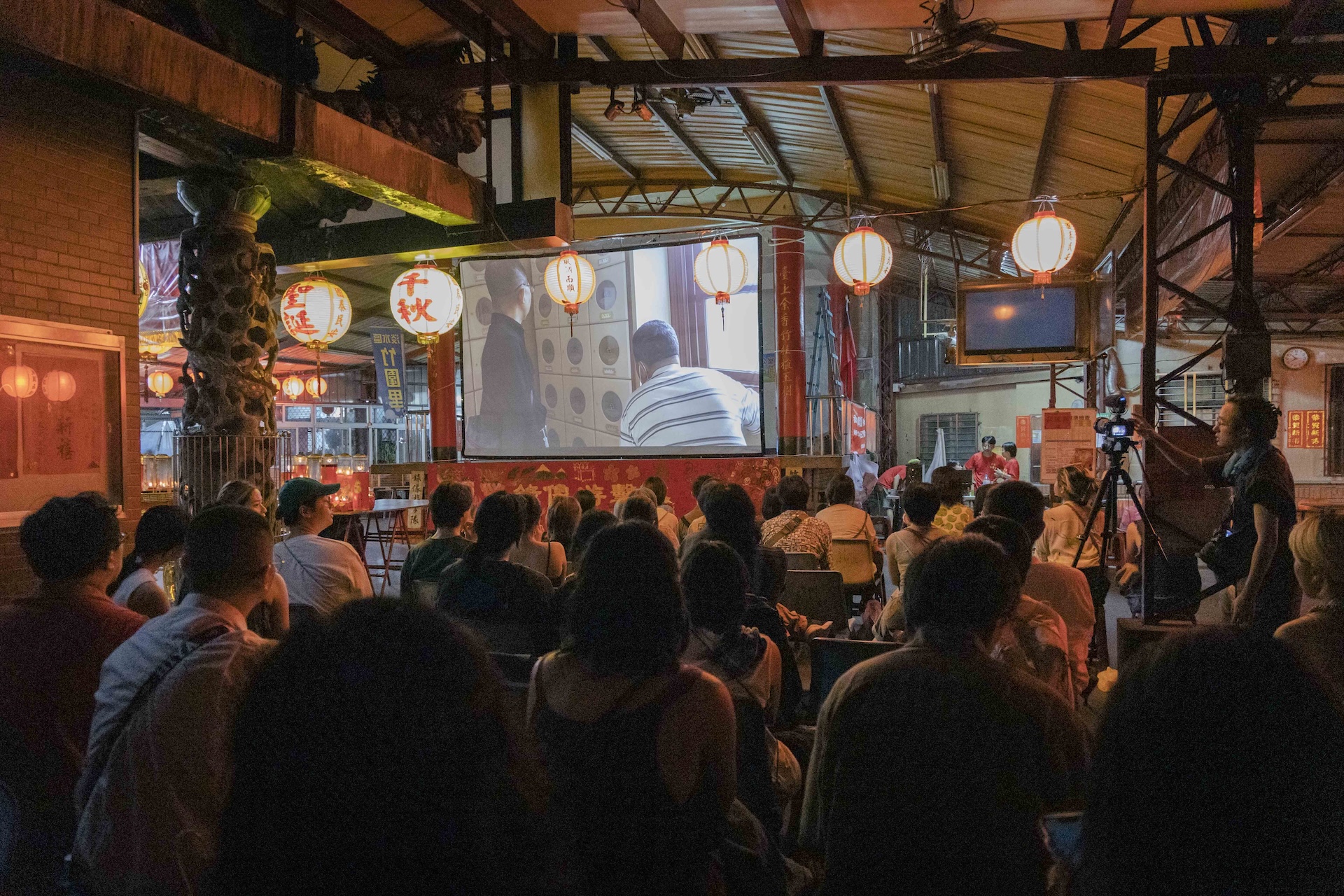We caught up with multi-disciplinary artist Sarah Francis to talk about how her work has developed a year on from her Convention House seed commission
Seed commissions allowed artists/collectives to discover the next steps in their artistic practice, thanks to the Weston Culture Fund.
How do you describe your practice?
If I were to condense it, I like to make very physical, colourful, tactile objects.
My practice now is much more sculptural than it used to be. I studied photography, but my work always had sculptural and performative elements to it. I would build large sets, or play with objects, and capturing this interaction was the creation of the work. I took a break a few years ago to set up Aire Place Studios and when I came back to being in the studio it felt good to be making more physical things.
The idea of play has always played a large part in my work, whether it be a series based on arranging chairs that were no longer fit for purpose in warehouses and photographing them (A Short Series of Chairs), or whether it was making photography work with my dog, Mr Doodles, through creating characters. It felt quite natural for my practice to progress from this to playing with materials to develop things. I’ve always hoarded materials, especially wood, and after going through the process of building Aire Place Studios I started to work with these materials to develop work.
Though there are similar themes, what do you think is significant between your earlier work and your current practice?
My work has always been autobiographical, and I’m always working through probably not very happy memories, but my current practice feels like it’s more authentic for the first time. I think that my work has always used humour as a driver, but my more recent work has become a lot more raw than the performance-led photographic work.
There was a slow realisation that the work I was previously making was masking my disability. By creating a world or moments in which to photograph there was a process in which I could reframe bad memories or experiences into something else and present a different version of myself through the work. I feel like making this work is a kind of discovery or exploration, and that it starts to ask ‘What does my unmasked self look like?’.
Does running a studio and having a practice feed one another?
I think that’s something I’m still figuring out as I move forward. When the world, nine years ago, wasn’t very accessible when you have ADHD and dyslexia I felt like I had to build something that was designed for me. I think that break gave me a way to be in a creative space, around creative people and have creative dialogue even though I wasn’t making art at the time. It kept me present, and I probably did need that gap to reevaluate where I was to allow my practice to develop into something else.
I don’t think that I would be as successful this time around if it wasn’t in part down to the conversations I’ve had with curators or the networks I’ve built during that time. So that experience helps me to know where the work should go.
Do you feel like the seed funding changed the way you were working at the time?
One of the big questions about making work at the time was how I could take it forward through technology. I use a scroll saw for a lot of the work, which can be quite intricate and time-consuming. I can’t use power tools for extended periods as I get a lot of numbness in my fingers. This limits how I can work, and also how much this can produce, which can, in turn, limit how much I can experiment with the works I make.
By using a laser cutter at Convention House, I was able to create drawings and then cut multiple base artworks, which allowed me to expand on the different materials I was using. Having multiples meant that I could experiment with them in different ways; using paint, resin, or bashing them around without worrying about repeating the entire process and being less precious with the pieces.
Though the pieces created during this process were relatively two-dimensional, they have led me to think more about larger sculptures and how they exist in the world or can travel to galleries. As part of Develop Your Creative Practice funding, I worked with Matt (East Street Arts technician) at Convention House again to look at how you can create flat-pack frames for sculptures, and wrap them with material to recreate the sculpture. Hypothetically, you could send the cutting files to someone across the world, and they could recreate the piece of work. It also opens the door to the pieces being scalable – they could follow a similar form for each space, but be cut at a size to suit individual galleries. It creates this modular element of being able to reproduce the works easily without being too precious over them, allowing you to experiment more.
Because of ADHD and dyslexia, I can struggle with some funding applications because I find it hard to explain to people what I’m going to make. This process has helped me develop more tools that help to show my ideas visually, through 3D modelling or being able to place the works in virtual reality to scale. It goes back to trying to make things more accessible in different ways, be that through the making process itself or through how it can be demonstrated.
In another conversation, with Pamela Crowe, you mention there being a relation between ‘the body responding in proximity to objects, locations and power’. Could you expand on this?
This was mostly about the larger layered wooden works I’ve been developing. I’ve been thinking a lot about how people interact with pieces, and the established norms around that. Because of my neurodiversity, I want to touch things, but much of the time galleries won’t allow people to because they’re for sale, though I think it’s an important part of the process and how people interact with work because not everything is strictly visual.
I exhibited at The Bowery and was interested in how people interacted with the work because it was possible for people to feel the work there. Because the work is about breasts, I find it interesting how people interact with them and it becomes about consent and the body. Men tend to be more nervous about touching them in a public space, but also when you show curators, even in a private space, there is such a tendency to only look at artworks rather than interact with them in other ways.
Sarah is currently displaying work in The Atrium at St James’ Hospital, as part of Collective Creativity. Find out more here: aireplacestudios.com/event/collective-creativity/
Aire Place Studios is currently fundraising to secure new premises for their studio – you can find out more here: crowdfunder.co.uk/p/save-aps
Find Sarah: @sarahfrancis.art | sarahfrancis.art















